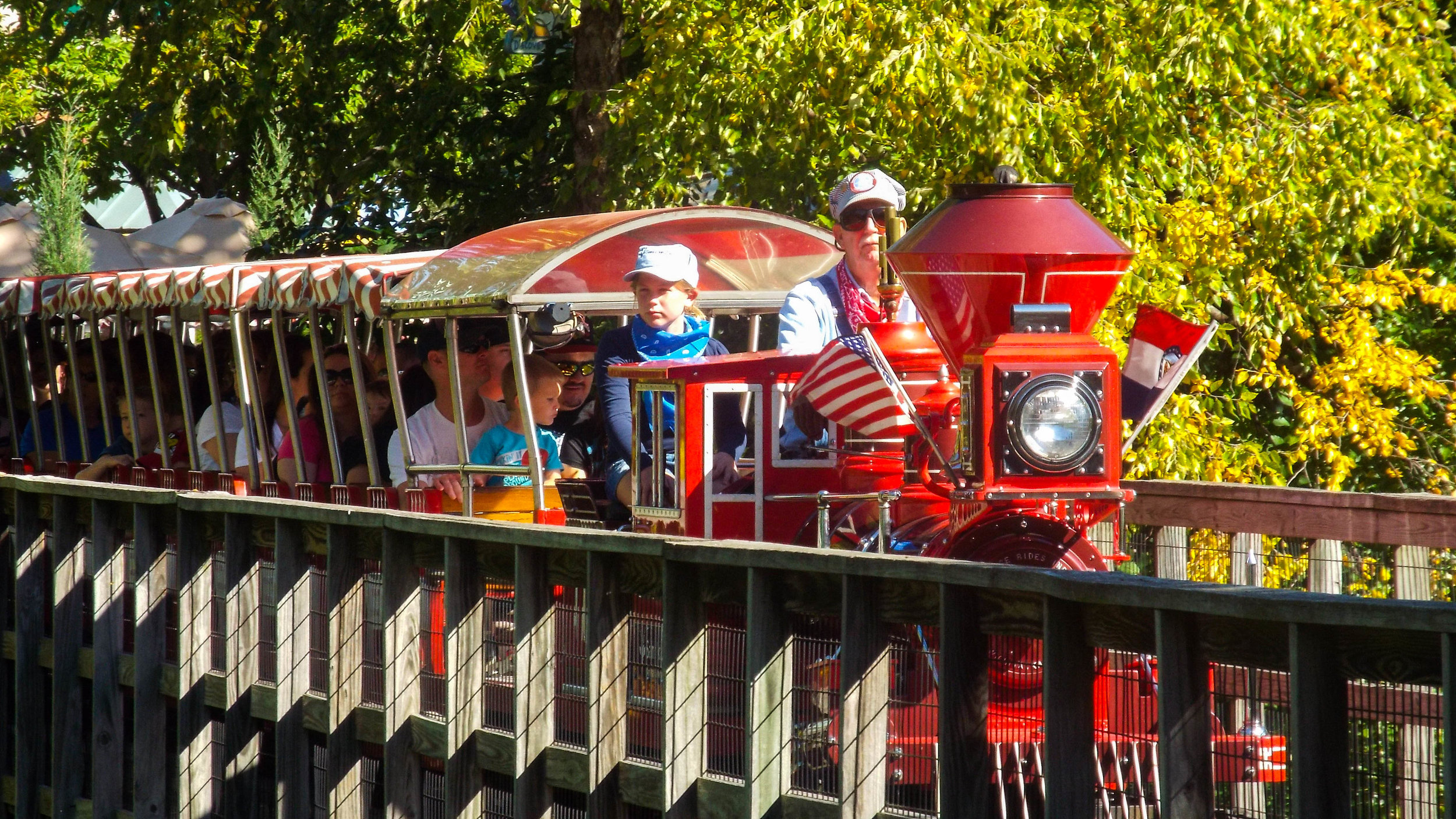Welcome to Saint Louis, Missouri
"The Gateway to the West"
The Emerson Railroad at the Saint Louis Zoo
The earliest records of human habitation in the St. Louis region date to the mound building civilization that centered around the site of Cahokia Mounds State Park across the Mississippi River in Illinois. There were some twenty mounds in the St. Louis region and the city was often called "Mound City," but these mounds were razed in the 19th century to make way for development. The city of St. Louis has its origins when in 1764 French fur traders established a small village named after Louis IX, the Crusader King of France, on the west bank of the Mississippi just below the Missouri River.
St. Louis prospered as a fur-trading center and became a main outpost of civilization in the central Mississippi River valley. By the time the United States assumed control of the area by virtue of the Louisiana Purchase, the early log cabins of the fur trappers began to be replaced by substantial stone houses of permanent residents. The beginning of the Westward Expansion began on May 14, 1804 when the Corps of Discovery led by Meriwether Lewis and William Clark began their expedition to explore the newly acquired land from just north of St. Louis.
In 1817 the steamboat era began when the first paddle wheeler arrived from Louisville and the city continued to expand with heavy German and Irish immigration. In 1820 Missouri was admitted to the Union as a slave state. Merchants and manufacturers took advantage of the steady stream of pioneers by providing supplies needed for the long trek west, thereby giving St. Louis the nickname of "Gateway to the West." During the Civil War the Union maintained control of St. Louis and the city became the main supply base for one million federal soldiers. The war helped to make St. Louis a main hub for the railroad industry, which took over the steamboat trade.
The Gateway Arch frames the Old Courthouse in downtown St. Louis
St. Louis enjoyed great prosperity during the last half of the 19th Century. Many public spaces and landmarks were built that still exist today. In 1904 the famous St. Louis World Exposition was held and the fair made a profit and left St. Louis with improved city services and a world class art museum. During World War II, most of the St. Louis manufacturing industry was converted to defense production. Franklin Delano Roosevelt and his administration proposed a national monument in St. Louis. In the late 1940's a design competition was won by Finnish architect Eero Saarinen for his design of a soaring 630 foot stainless steel arch. The Gateway Arch, completed in 1966, rises over the west bank of the Mississippi as a symbol of St. Louis' role as the Gateway to the West.
Busch Stadium, home of the St. Louis Cardinals baseball team, opened in 1965, and along with the opening of the arch helped breathe life back into the city which had deteriorated when many people had moved into the suburbs. The "new" Busch Stadium has replaced the 1965 structure and opened in 2006. More recently Union Station and Laclede's Landing have been rehabilitated. The Cervantes Convention Center was greatly expanded and is now known as The Americas Center. The Metro Link Light Rail System has made fast and easy public transportation available throughout the city and county.
greatriverroad.com invites you to explore Saint Louis because as the Saint Louis Convention and Visitors Commission says: "there's more than meets the Arch!"












